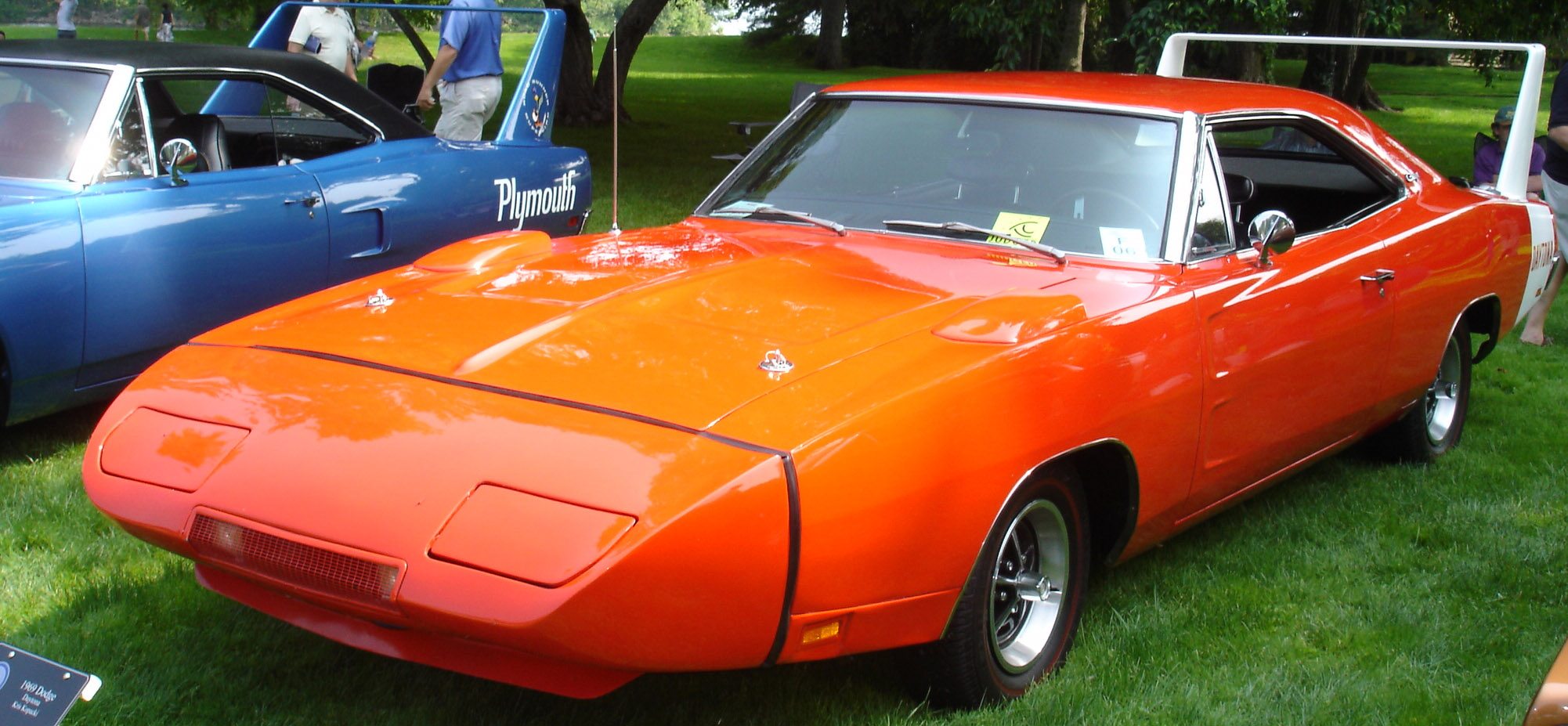
The 1969 Dodge Daytona, and corporate sibling the 1970 Plymouth Superbird, were special edition vehicles manufactured by Mopar to compete mostly in NASCAR. Designed in a wind tunnel and boasting a 0.28 drag coefficient, the Daytona’s styling was bold, to say the least. Taking its front fenders and hood from the Dodge Coronet, it had a beak-like steel front nose and an iconic rear wing made of aluminum that towers above all other production spoilers.
This spoiler was important since the car was capable of speeds exceeding 200 MPH. At these speeds it created the down-force necessary to keep the car on the ground. The rear wing is what most notably made it one of the “Aero-Warriors” of its day – stock cars that manufacturers modified to include unprecedented aerodynamic features.
But did it have to be that tall?
There is some debate about this, but most experts will tell you “no,” at least not from an aerodynamic standpoint. In 1969 NASCAR really did race “stock cars” and auto manufacturers had to build and sell at least 500 of them to be eligible to compete. Unlike many spoilers, the Daytona’s rear wing was not attached to the trunk of the car, but the rear quarters instead. This presents a problem when you consider that the trunk of the car actually needs to open if it’s going to be sold to the public. In order to allow the trunk to open all the way, the spoiler had to be raised to height even taller than the roof of the car.
The Daytona and Superbird, although winners on the track, were largely rejected by the car-buying public at the time. Many were left unsold after a year on the lots. Today, it’s a highly sought-after classic car, and perhaps for good reason: no car has ever looked like it before or since.
If you have an early model Charger or another collectible you’d like to insure with us, let us show you how we are more than just another collector vehicle insurance company. We want to protect your passion! Click below for an online quote, or give us a call at 800.678.5173.


Leave A Comment